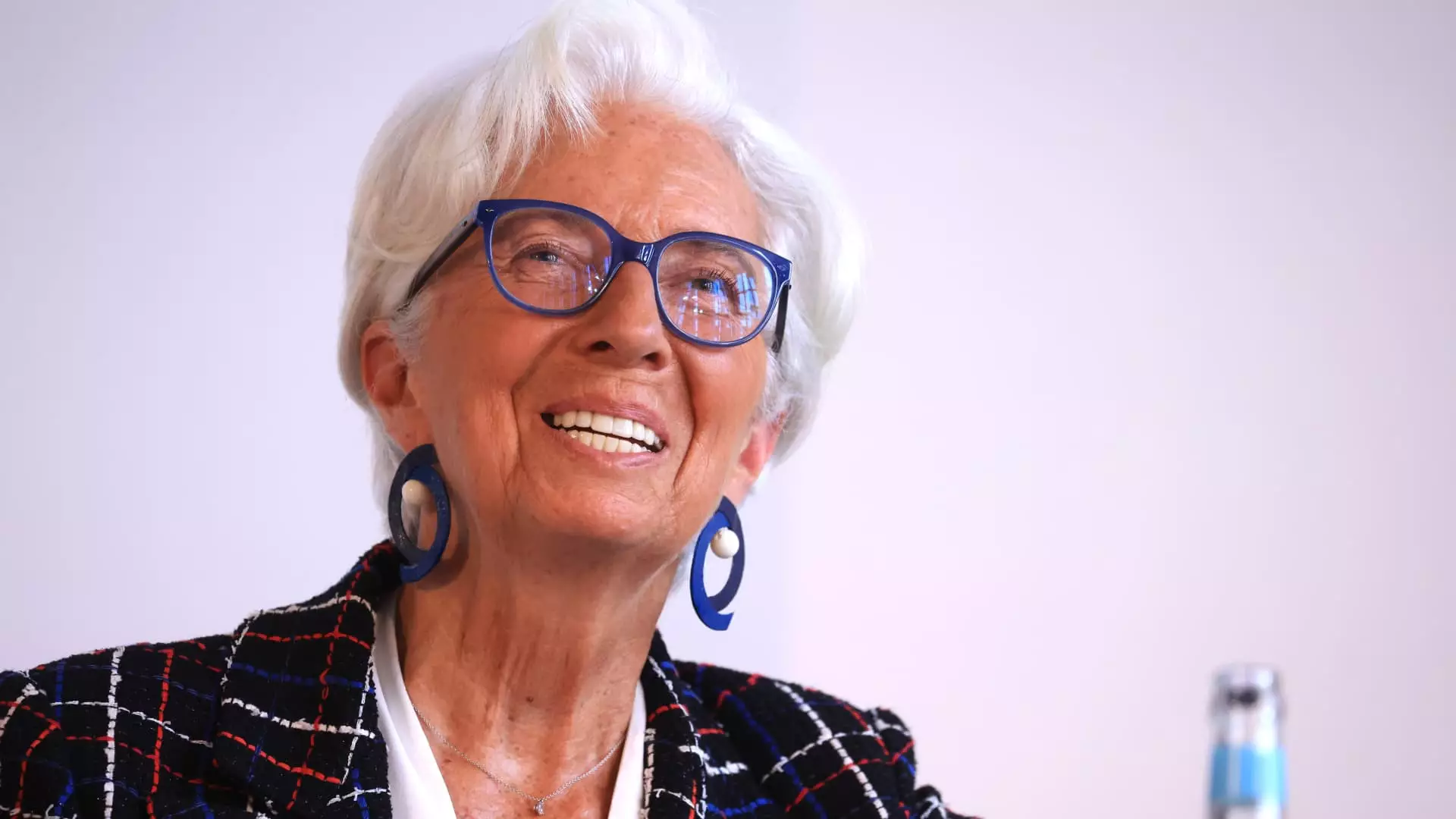The European Central Bank’s recent decision to reduce interest rates by 25 basis points, bringing the deposit facility rate down to 2%, signals a changing climate within the European economy. This is a notable shift from the rate highs witnessed earlier in 2023, where rates peaked at 4%. The rationale behind this move comes with a cocktail of factors including a robust euro and decreasing energy prices—conditions that could lead some to cheer this monetary easing. Yet, simply highlighting these positives serves to obscure deeper and more complex economic realities.
Interest rate cuts are traditionally seen as a boon for borrowers and a sign of a nurturing economic environment. However, in this instance, there’s an unsettling sense that the ECB’s decision is a reactionary measure. The bank’s revised outlook for inflation, now tracking to average 2% by 2025—a drop from the previously estimated 2.3%—captures the uncertain mood that has blanketed European markets.
The Delicate Dance of Inflation
The ECB’s acknowledgement of inflation now resting below its 2% target paints a picture of an economy struggling to maintain momentum. While the numbers appear benign on the surface, with euro zone inflation recently clocking in at 1.9%, they mask a more troubling trajectory. The upcoming economic projections reveal that core inflation is expected to hold steady at 2.4%—an alarming sign that even in a lower inflationary environment, the underlying cost pressures are anything but resolved. It appears that the ECB may find itself entangled in a complex balancing act between the necessity to stimulate growth and the concerns of inflationary stability.
With these mixed signals, peripheral markets are understandably jittery. Financial markets reacted to the announcement with a slight uptick in the Stoxx 600 index, yet it is essential to recognize that such incrementally positive responses may merely be temporary, driven by trader sentiment rather than sustainable economic health.
Stagnation Amidst Growth Projections
Amid the turmoil, the euro zone’s growth forecast remains frustratingly modest, with a mere 0.9% anticipated for 2025. With an initial first-quarter growth estimate of just 0.3%, it resonates strongly with the notion that while the ECB may be attempting to cultivate an environment conducive to economic recovery, actual growth is lagging significantly behind expectations.
Underpinning the somber growth figures is an undeniable deterioration in business confidence, exacerbated by ongoing uncertainty in trade policies. The specter of protectionism looms large, with external threats—most notably U.S. tariffs—holding the potential to stifle European industries such as steel and automotive manufacturing. The precarious balance of trade policy and its implications for inflation further complicate matters, leaving policymakers with more questions than answers.
The Inflection Point of Geopolitical Tensions
The ECB’s recent maneuvers arrive at a particularly fraught juncture in global economic relations. The increasing geopolitical tensions, spurred by decisions in Washington D.C., have bred an atmosphere fraught with uncertainty. Poised to adversely affect European economic landscapes, these external pressures are additionally compounded by the mandates to ramp up defense spending and infrastructure investments.
While such spending ought to present opportunities for growth, it also poses risks. Higher government expenditures do not always translate seamlessly into economic expansion, especially when consumer confidence remains shaky. The implications of this spending shift are varied; it could bolster the economy or add burdens to government debt, leaving citizens to grapple with the consequences.
In this context, the ECB’s cautious yet necessary decision reflects an institution increasingly aware of the precarious nature of today’s economic challenges. Despite its intention to foster recovery, the vital question lingering in the air is whether these efforts will bear fruit or simply postpone a reckoning. The interplay of domestic fiscal strategies and external threats will dictate the economic landscape of the euro zone for years to come, and the ECB finds itself at the forefront of this evolving dynamic—an arena where its policies might lead to a soothing balm or a harsh reality check.


Leave a Reply